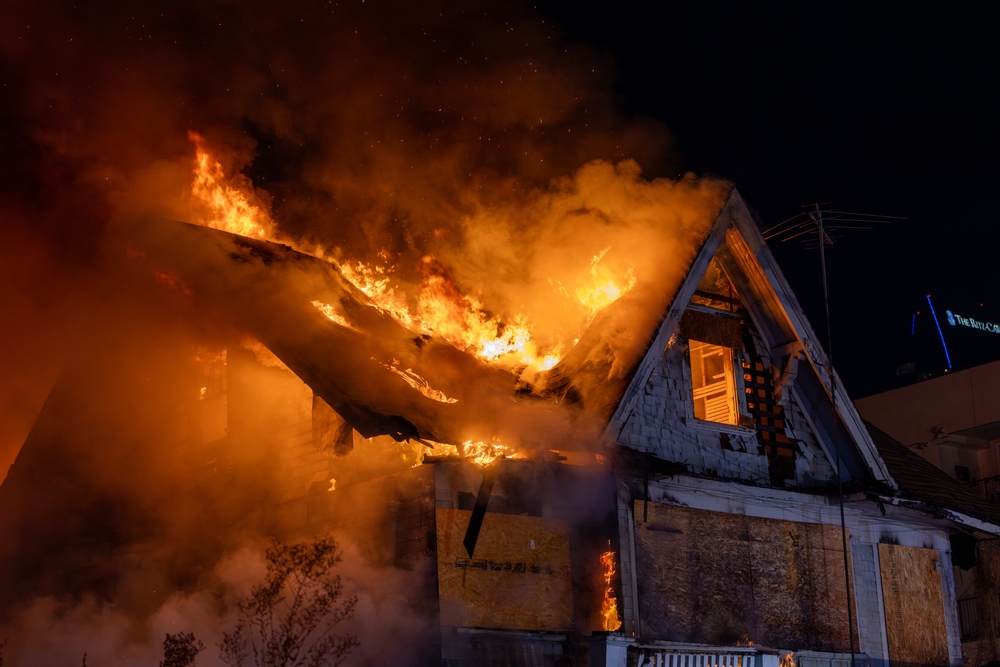Fire doesn’t discriminate. It doesn’t check property values, read community rules, or consider the age of a building. It moves fast, feeding on dry brush, faulty wiring, and unattended flames. For homeowner associations (HOAs), fire safety isn’t just about prevention—it’s about protecting lives, homes, and entire neighborhoods.
Here are six fire safety strategies that every HOA should put into action to keep their communities safe.
1. Educate Residents—Because Awareness Saves Lives
Fire prevention starts with knowledge. The more residents understand about fire safety, the safer everyone will be. This isn’t about scaring people into submission—it’s about equipping them with the right habits to reduce risk.
HOAs should regularly share fire safety tips, like:
- Testing smoke detectors monthly and replacing batteries as needed.
- Creating an emergency evacuation plan with at least two escape routes.
- Keeping fire extinguishers in kitchens, garages, and other high-risk areas.
- Never overload electrical outlets or run cords under rugs.
How do you get the word out? Use HOA newsletters, community boards, and social media pages. Organizing a fire safety seminar with the local fire department is another great way to keep safety top-of-mind.
2. Strengthen Your Relationship with the Local Fire Department
Knowing your local fire department is like having a direct line to an expert safety team. Build that relationship. Invite fire officials to HOA meetings, ask for their input on community safety measures, and find out how they can assist with inspections and education.
Many fire departments offer free or low-cost safety inspections, which can help identify risks before they become disasters. A proactive approach not only improves safety but may also reduce insurance costs for the community.
3. Maintain Fire Alarms and Carbon Monoxide Detectors in Common Areas
If your HOA oversees common buildings—clubhouses, gyms, or shared spaces—fire alarms and carbon monoxide detectors must be in top working condition. This isn’t a “set it and forget it” situation. Regular inspections should be scheduled, batteries changed, and outdated systems upgraded.
For individual homes, encourage residents to test their alarms monthly and replace units that are more than ten years old. A simple reminder in your HOA’s monthly email can make all the difference.
4. Fireproof Your Landscaping
The beautiful trees and shrubs that make a community look inviting can also turn into a fire’s best friend. Dry leaves, overgrown vegetation, and flammable mulch can fuel a fire and help it spread.
Fire-resistant landscaping should be a priority. Here’s what HOAs can do:
- Keep trees trimmed and ensure they are at least 10 feet from structures.
- Use fire-resistant plants like succulents, lavender, and oak trees.
- Replace wood mulch with gravel or other non-flammable materials.
- Clear dry brush and debris regularly, especially during fire season.
- Install a well-maintained irrigation system to keep greenery hydrated.
Taking these precautions minimizes the chances of a small spark turning into a community-wide catastrophe.
5. Hold Annual Fire Drills—Practice Makes Protection
During an emergency, panic can be just as dangerous as the flames. If residents don’t know what to do or where to go, evacuation becomes chaotic.
An annual fire drill helps residents become familiar with emergency exits, gathering points, and the physical effort required to leave their homes quickly. For those in multi-story buildings or with mobility issues, it’s especially important to understand the challenges of getting out safely.
Consider partnering with local fire officials to make the drill as realistic as possible. If your HOA oversees a large community, having designated fire wardens can help keep things organized.
6. Set and Enforce Fire Hazard Policies
Rules aren’t always fun, but when it comes to fire safety, they are necessary. Every HOA should have clear policies about fire hazards, including:
Grill Restrictions – Prohibit grills on balconies or near structures where a single flare-up could ignite a building.
Fire Pit Guidelines – If fire pits are allowed, enforce strict placement rules and ensure fire extinguishers or hoses are nearby.
Proper Storage of Flammable Materials – Establish guidelines for safe storage of propane tanks, gasoline, and other combustible items.
Clear Smoking Rules – Designate smoking areas with proper disposal bins and enforce no-smoking zones in high-risk areas.
If your HOA documents don’t include fire hazard restrictions, it may be time for an update. Consult your HOA lawyer to make necessary adjustments and keep the community protected.
Maintain Efficient Fire Safet With Proper HOA Management
Fire prevention isn’t just an HOA responsibility—it’s a community-wide commitment. The best way to protect homes, families, and investments is through education, planning, and proactive safety measures.
Does your HOA have a fire safety plan? If not, now is the time to create one. Proper HOA Management can help you develop policies, coordinate fire safety initiatives, and keep your community prepared. Let’s work together to make your neighborhood safer—contact us today to get started!


